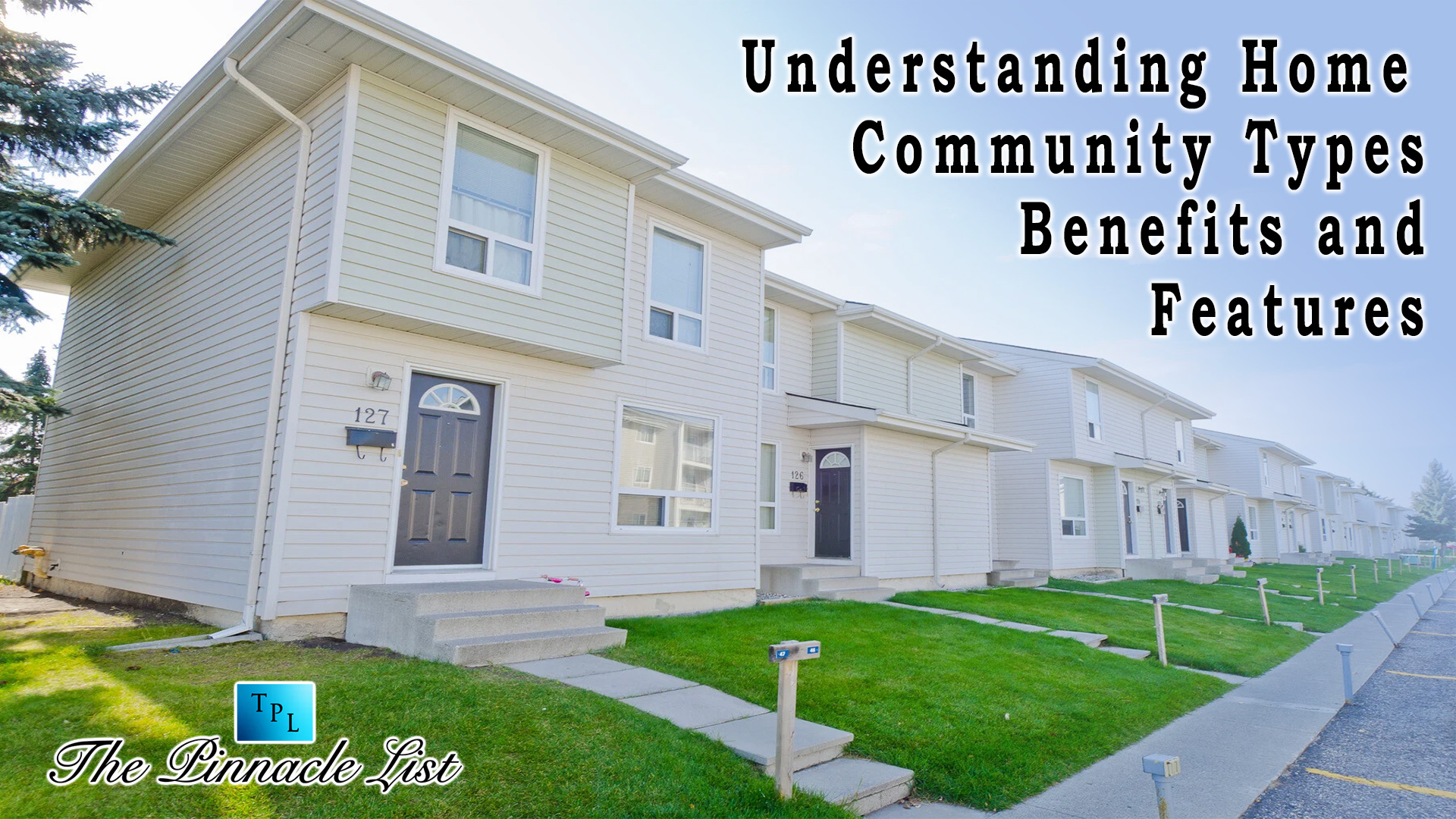
What kind of home community is right for you? Choosing the right place to live is important. Each community type has different benefits and features.
Some offer more privacy, while others focus on social living. Understanding these options helps you make a better choice. Do you need a quiet space or a lively neighborhood?
This guide will explain the different home community types. Keep reading to find the best fit for you!
Single-Family Homes
These homes are built for one family and do not share walls. They provide more space than apartments or condos. Many have a private yard and garage. They are common in suburban and rural areas. Some are in neighborhoods with parks and sidewalks. Owners have full control over their property. They must handle repairs and maintenance themselves.
Some areas have homeowner associations with rules. These homes often increase in value over time. They can be a good choice for families. Many buyers prefer them for privacy and freedom. Single family homes hey do not share walls with neighbors. They come in different styles and sizes. Location and amenities affect their price.
Townhouses
Townhouses are a popular choice for homebuyers looking for a balance between affordability and privacy. They are typically multi-level homes that share one or two walls with neighboring units.
Many townhouses are located in planned communities that offer amenities like pools, parks, and fitness centers. These communities often provide maintenance services, which can reduce the upkeep responsibilities for homeowners.
If you are searching for townhomes near you, consider factors like location, HOA fees, and community rules. Townhouses can be a great option for first-time buyers or those looking to downsize.
Condominiums
These homes are private units in a shared building. Owners only own the inside of their unit. The exterior and common areas are shared. A homeowner association manages maintenance and rules. Many have fees for upkeep and services. Some offer amenities like pools or gyms.
They are common in cities and busy areas. Many cost less than single-family homes. They can be good for first-time buyers. Some people like them for low maintenance. Neighbors live close together. Parking may be limited in some places. They come in different sizes and styles. Location affects their price and demand.
Apartments
These homes are units in a larger building. They can be rented or owned. Most have shared walls with neighbors. Some buildings have many floors. A landlord or company manages maintenance. Many have shared spaces like pools or gyms. Parking may be limited in some areas.
They are common in cities and busy places. Some offer security and on-site staff. Many cost less than houses to rent. They can be a good choice for singles or small families. Some have balconies or small patios. Noise can be an issue in some buildings. Location affects rent and demand.
Gated Communities
These neighborhoods have controlled entrances. Only residents and guests can enter. Many have security guards or gates. They offer more privacy than open neighborhoods. Some have amenities like pools or parks. Homeowner associations manage rules and fees. Houses can be single-family homes or townhouses.
Some communities have strict guidelines. They are common in suburban and upscale areas. Many people choose them for safety. Property values may be higher in these areas. Some have private roads and services. They can create a strong sense of community. Location and amenities affect their cost.
Senior Living Communities
These neighborhoods are for older adults. Most have age restrictions for residents. They offer independent or assisted living options. Some provide medical care and support. Many have shared amenities like pools or gyms. Social activities are common in these areas. Homes can be apartments, townhouses, or single-family houses.
Some communities include dining and housekeeping services. Safety features like emergency call systems are often available. They are usually quiet and well-maintained. Homeowner associations may handle maintenance and rules. Some are in suburban or resort-like settings. Many people choose them for convenience and social life. Costs vary by location and services.
Co-Housing Communities
These neighborhoods focus on shared living. Residents have private homes but share common spaces. Many have shared kitchens, gardens, or play areas. People work together to maintain the community. Decisions are often made as a group. Some communities hold regular meetings.
They are built to encourage social connections. Many are designed to be eco-friendly. Some focus on specific lifestyles or values. They are common in urban and suburban areas. Home sizes and styles can vary. Some have homeowner associations with rules.
Mobile Home Parks
Homes are placed on rented or owned lots. Many parks have shared spaces like clubhouses. Some offer amenities like pools or playgrounds. They are common in suburban and rural areas. Many are more affordable than traditional houses. Some parks have age restrictions for residents.
A manager or company oversees maintenance. Rules and fees vary by location. Some homes can be moved if needed. They provide a sense of community. Neighbors live close together. Many people choose them for low costs. Location affects rent and home prices.
Rural Communities
These areas have open land and fewer people. Homes are spaced far apart. Many houses have large yards or farms. Nature surrounds these communities. Some lack nearby stores or services. Roads may be unpaved or less maintained. Many people grow food or raise animals. Life is slower and quieter than in cities.
Neighbors may live miles away. Some areas have limited internet or phone service. Homes can be cabins, farmhouses, or modern houses. Many people move there for peace and space. Wildlife is common in these areas.
Urban High-Rises
They are common in big cities. Most units are apartments or condos. Many have elevators and security. Some offer amenities like gyms or pools. Parking can be limited or expensive. People live close to neighbors.
Noise is common in these areas. Many are near jobs and public transport. Some have great city views. Rent and prices are often high. Space is smaller than in houses. Maintenance is handled by building staff. Location affects cost and demand.
Learn More About Home Community Types
There are many types of home communities. Each offers different benefits and lifestyles. Some provide more privacy, while others focus on shared spaces.
People choose based on needs, budget, and location. The right community depends on personal preferences.
Looking for more tips and ideas? We’ve got you covered. Check out some of our other posts now.
